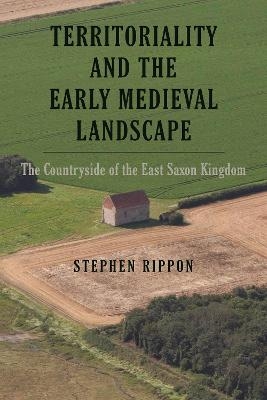
Territoriality and the Early Medieval Landscape
The Boydell Press (Verlag)
978-1-78327-680-6 (ISBN)
All communities have a strong sense of identity with the area in which they live, which for England in the early medieval period manifested itself in a series of territorial entities, ranging from large kingdoms down to small districts known as pagi or regiones. This book investigates these small early folk territories, and the way that they evolved into the administrative units recorded in Domesday, across an entire kingdom - that of the East Saxons (broadly speaking, what is now Essex, Middlesex, most of Hertfordshire, and south Suffolk). A wide range of evidence is drawn upon, including archaeology, written documents, place-names and the early cartographic sources. The book looks in particular at the relationship between Saxon immigrants and the native British population, and argues that initially these ethnic groups occupied different parts of the landscape, until a dynasty which assumed an Anglo-Saxon identity achieved political ascendency (its members included the so-called "Prittlewell Prince", buried with spectacular grave-good in Prittlewell, near Southend-on- Sea in southern Essex). Other significant places discussed include London, the seat of the first East Saxon bishopric, the possible royal vills at Wicken Bonhunt near Saffron Walden and Maldon, and St Peter's Chapel at Bradwell-on-Sea, one of the most important surviving churches from the early Christian period.
Stephen Rippon is Professor of Landscape Archaeology at the University of Exeter, and current President of the Society for Medieval Archaeology.
PART I: BACKGROUND
Chapter 1 Introduction
Chapter 2 Territoriality in Early Medieval England
Chapter 3 Reconstructing Early Medieval Folk Territories
PART II: THE EARLY FOLK TERRITORIES
Chapter 4 From Early Folk Territory to Domesday Vills: The Rochford Peninsula
Chapter 5 Immigration and Integration in the Central Thameside Districts: The Fen District and Havering
Chapter 6 The Province of the Middle Saxons
Chapter 7 Fringes of the Kingdom: The Eastern Coastal Districts and the Landscape Context of Anglo-Saxon Colonisation
Chapter 8 A British Domain: The Central Claylands, Place-names, Early Medieval Territorial Identity, and the -ingas Question
Chapter 9 Another British Domain: The Northern Claylands
Chapter 10 And Another British Domain: The Western Districts, and Romano-British Antecedents of Early Medieval Central Places
Chapter 11 Beyond the Northern Frontier
PART III: DISCUSSION AND ANALYSIS
Chapter 12 Agriculture and Resource Management
Chapter 13 Conclusions
Appendices
1. Domesday population densities across the 'Rochford Peninsula' early folk territory
2. Sites used in the analysis of animal bone assemblages
3. Sites used in the analysis of charred cereal assemblages
Bibliography
Index
| Erscheinungsdatum | 30.03.2022 |
|---|---|
| Reihe/Serie | Garden and Landscape History |
| Zusatzinfo | 20 b/w, 65 line illus. |
| Verlagsort | Woodbridge |
| Sprache | englisch |
| Maße | 297 x 210 mm |
| Gewicht | 2 g |
| Themenwelt | Geisteswissenschaften ► Archäologie |
| Geschichte ► Allgemeine Geschichte ► Mittelalter | |
| ISBN-10 | 1-78327-680-0 / 1783276800 |
| ISBN-13 | 978-1-78327-680-6 / 9781783276806 |
| Zustand | Neuware |
| Haben Sie eine Frage zum Produkt? |
aus dem Bereich


